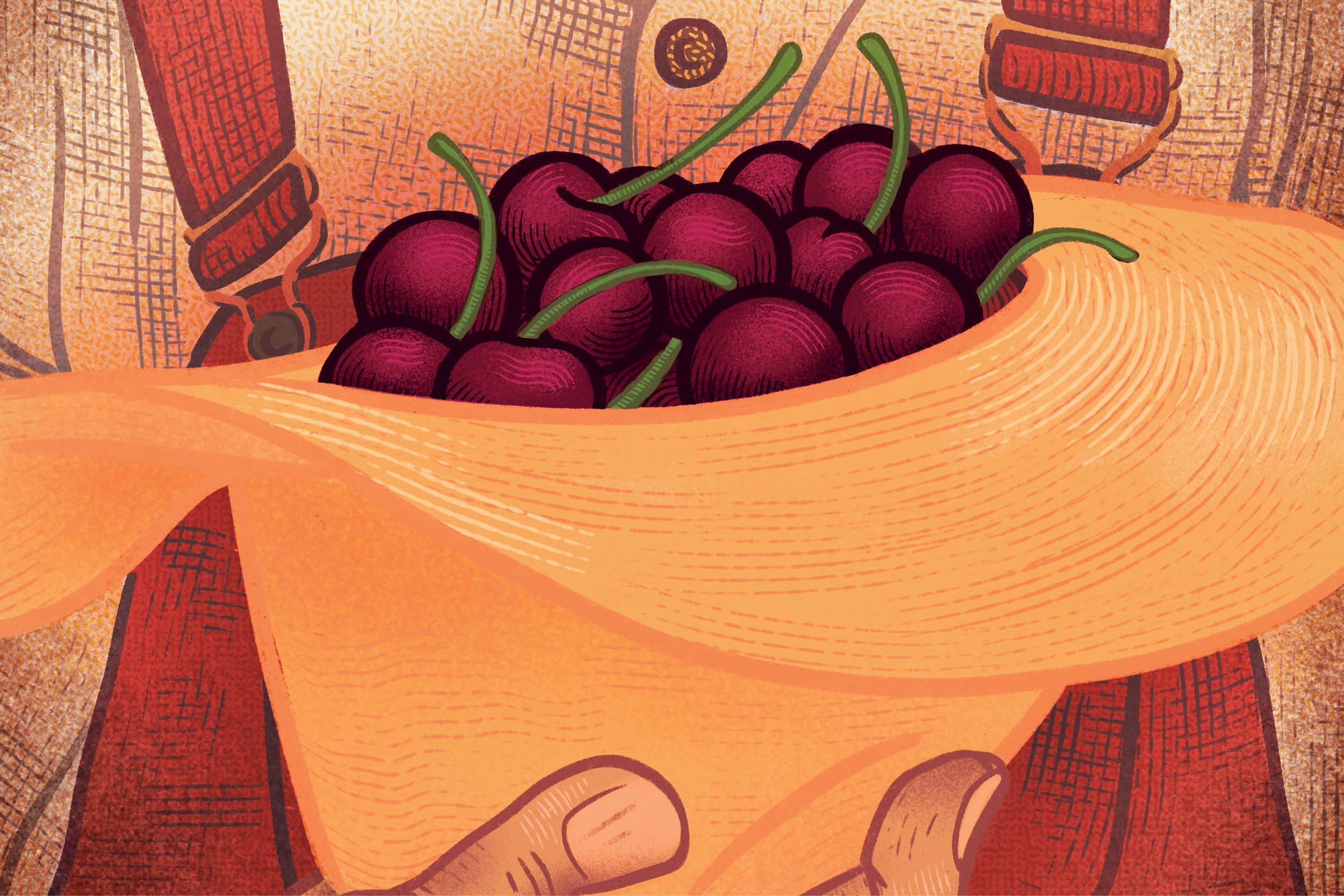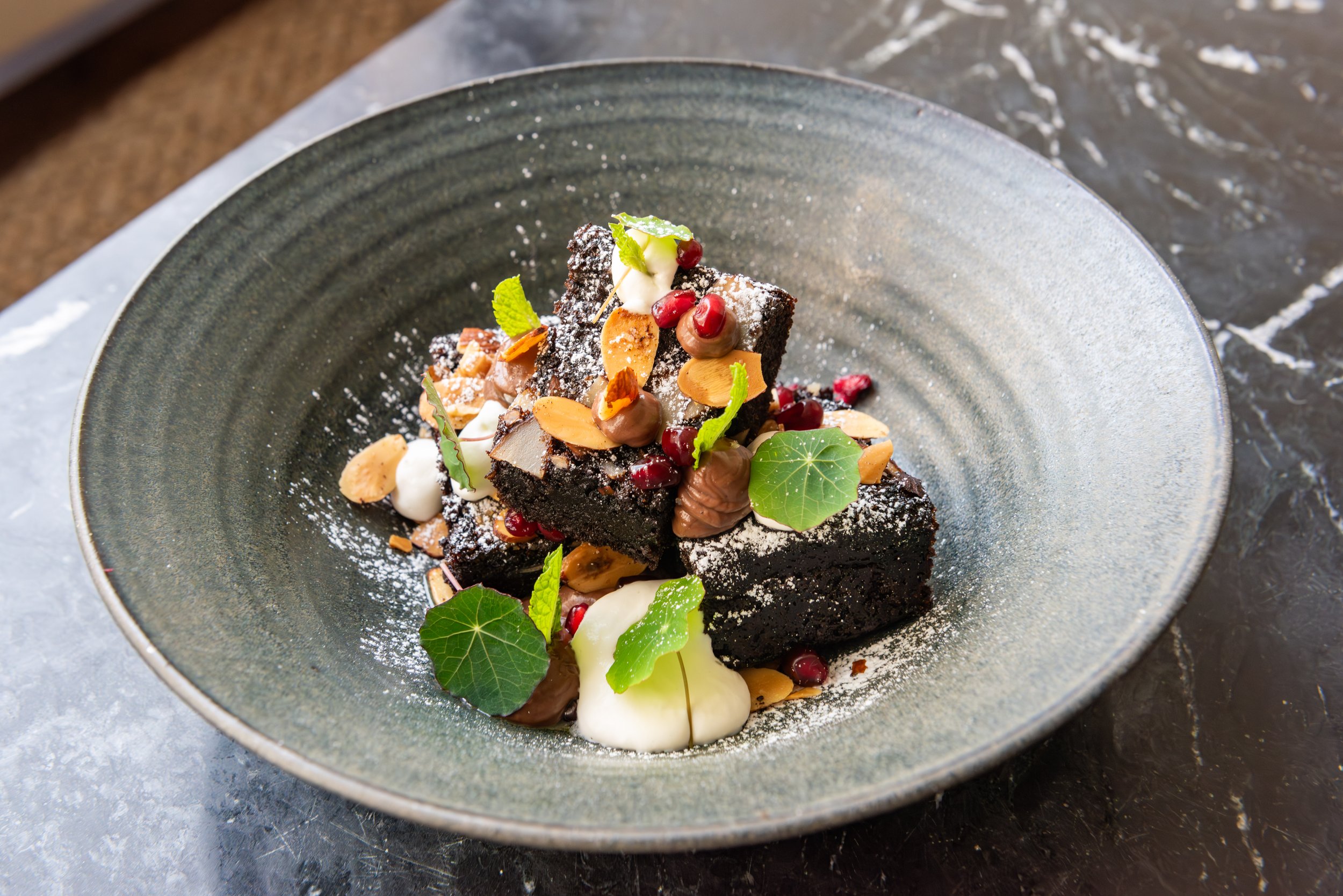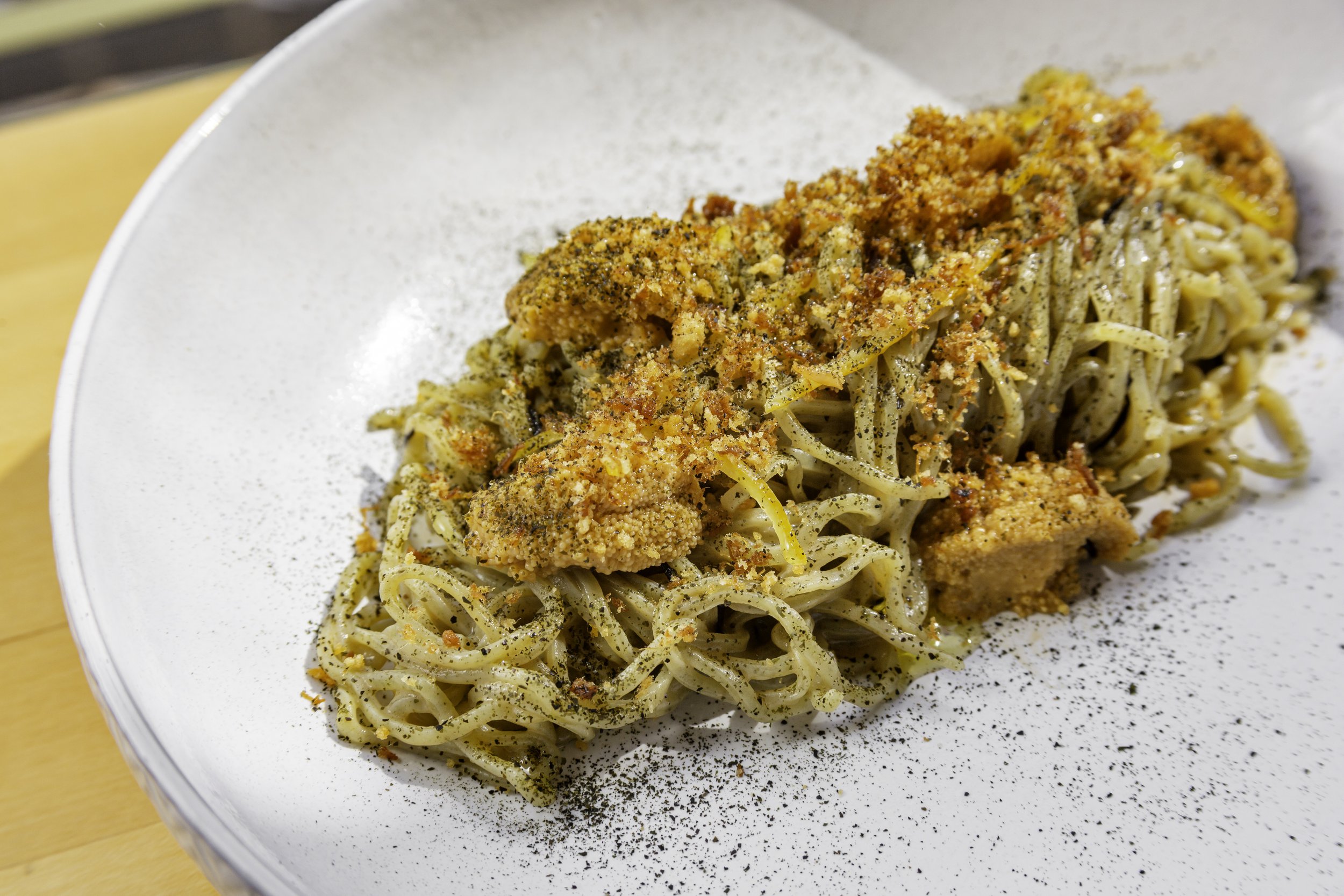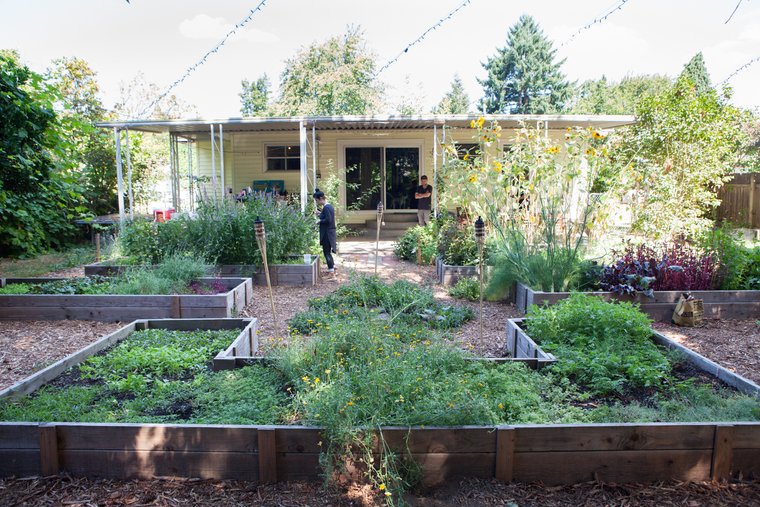The Mission to Cultivate Texas Cherries
At Idalou Harvest, farmers navigate Texas weather to break ground on stone fruit.
illustration: caroline pronske
If cotton is king in Lubbock County, then cherries would be lucky to rank among the nobility. But one orchard, Idalou Harvest, is trying to make Texas cherries happen.
Dan, Connie, and Ty Williams own Idalou Harvest, along with the packing company Top of Texas. The Williams family, who also operate 400 acres of orchards in Cedaredge, Colorado, took over Top of Texas Apples, as it was then called, in 1992. In addition to tomatoes, okra, onions, squash, and other vegetables, the 55 acres of Idalou Harvest include orchard fruit like pears, apples, peaches, wine grapes, apricots, pomegranates, nectarines, and now, cherries.
“They started a variety [of trees] to see what would grow and what wouldn’t,” says Lucinda Mann, who manages the greenhouses and runs the orchard’s retail and wholesale accounts. Their cherry trees, two sweet and two tart varieties, are six years old. “Cherries aren’t so common in Texas,” she adds. “They need so many hours of cold, just like peaches and apples, so they can have a good production.”
“The cherries come off [the trees] at the first part of June and through July,” says Mann. “They usually only have about a month.” That’s if the cherries grow at all. “In some areas, frosts are beginning to be more frequent; the weather is changing,” she says.
The rarity of Texas-grown cherries made them all the more appealing to chefs like Meadow’s PJ Edwards. “Normally when I think cherry, I think Washington or Michigan, not really Texas,” says Edwards, who pairs Idalou Harvest ember-roasted cherries with seared mushrooms and black garlic barbecue sauce. “Our menu is very product-driven, and seasonally driven,” he says.
“For us at Ladino, cherries are a huge thing in the part of the world we’re cooking from,” says Chef Danny Parada. “Whenever there’s something like that available here in Texas, we try to pounce on it.” At Ladino, a modern Mediterranean restaurant, he prepares a salad of cherries, celeste figs, schug vinaigrette, chiles, radish, and tulum cheese.
Since cherry season is so short, they’re a little more exciting for chefs to work with. But, when a late frost hits cherry buds, as happened this year, the trees don’t fruit. Idalou Harvest sources cherries from the Williams’ orchards in Western Colorado when the Texas cherries don’t produce.
Roasted Shiitake and Oyster Mushrooms, Oak-Roasted Texas Cherries, Black Garlic Barbecue Sauce, Candied Peanuts, Crispy Garlic, Benne Seed Crumble
Cherries, Celeste Figs, Zhug Vinaigrette, Chiles, Radish, Tulum Cheese
While sourcing out of state isn’t ideal, it’s the reality of precarious growing seasons made more difficult by climate change. “Our main goal is to support local farmers,” says Parada. “So if crazy Texas weather cuts out a bunch of potential profits for them, in order for us to support them, we have to buy cherries from their Colorado orchard so they can maintain their Texas orchards.”
To alleviate chilly conditions, Idalou Harvest uses wind machines to help regulate temperature and protect budding fruit trees. Coupled with smudge pot burners throughout the orchard, the wind machines pull up warm air and move it around the trees to, hopefully, prevent frost damage.
At the other end of the spectrum, this year’s extreme heat and lack of rain “affected everything desperately,” Mann says. “Lots of people lost their crops this year.”
“In the summer, we try to keep plenty of water on them,” she adds. Groundwater supplies are currently fine, Mann says, but they’ll likely have problems in the future since they’re surrounded by cotton farms. Nets over trees protect against birds and hail, while cover crops—mainly grass—between tree rows keep the heat down.
Weather is the main challenge to growing cherries, but bugs and herbicide drift from other farms don’t help either. “Our biggest problem is thrips,” says Mann. The tiny insects go after cotton especially, so when the neighboring cotton farmers perform pest mitigation, it drives the thrips into the orchard.
So, why grow cherries if they’re not even guaranteed to produce fruit? It’s all about diversifying and providing variety. “We planted 4,000 apricot trees this year, too,” Mann says. “We’re bringing more offerings to the table.” The effort to cultivate cherries has also been kicked into high gear after seeing the demand from local restaurants and supermarkets.
In addition to sending their harvest to grocery stores like Albertsons, H-E-B, and United Supermarkets, the Williams’ fruit is starting to appear in restaurants like Meadow and Ladino. “We’re just now getting into some of the restaurant business,” says Mann. “We have a local group who helps farmers with direct marketing to restaurants, so that’s just now picking up for us this year.” A box of cherries, averaging 20 to 25 pounds, sold for $60 this season, though the price could change depending on the year. “Growing any tree is like growing any other plant,” adds Mann. “It takes a lot of love, a lot of time, and a lot of sacrifice.”








